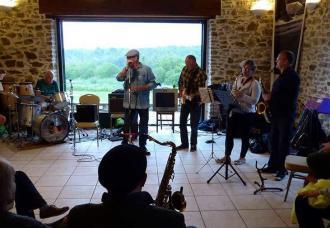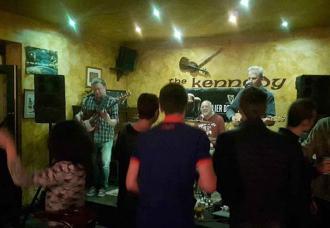Waiting for the Buss
I was having a conversation with my wife just recently. At that time the beginning of 2017 was looking thin on the ground for gigs and musical sessions. Nothing much was happening in general and typically, I was bemoaning this state of affairs. But there’s the old cliche about waiting for a bus to arrive and then when one does—it heads a convoy! And it’s true that shortly after our conversation a whole lot of buses/opportunities seemed to arrive.
From having—in effect—too much time on my hands I suddenly had to manage this time efficiently. Normally speaking I like to do a drum video each week—this takes time and focus. But some friends I had worked for in the past, on the back of me drumming for their Christmas single, wanted drums on a new tune. This they wanted to reflect the programmed drums they had used to compose (respecting stops/fills etc but adding my own personality).
When playing a session or learning any song there seems to be a procedure. Firstly there is an overall view—the general arrangement of the song: intro/outro/verse/chorus/’middle eight’ (which could be any number of bars)/solos/bridge-sections etc. It’s first necessary to be totally comfortable with this structure—even if written down. You need to know where you are with the song. From this overall viewpoint then we can hone in on sections and decide what to play (if original) copy or add something of ourselves—as in my case.
As with Indian music, verbalising rhythms helps to convey and learn intricate patterns.
If copying another drummer (or any other instrument) then repeated, close listening is called for. Making quick notes of rhythms, phrasing and fills. There are conventions that are normally observed in general (a different ‘feel’ between chorus and verse, for instance) and these can be noted quickly. For the drums then we need to hear the various components: hi-hat cymbals (these are the cymbals on a stand we can play with our foot – making a ‘chick’ sound to help keep rhythm or with our sticks…the infamous disco ‘pea-soup’ sound is typical. In fact the hi-hats used to be played ONLY by the foot as the cymbals were close to the ground. Eventually, as the drum-kit evolved someone had the idea of raising the cymbals so they could be played by the sticks too); the snare drum (giving the distinctive ‘crack’ on the ‘back-beat’ of Western music). This drum has wires on its underside (military bands can have wires under the top ‘skin’ too) that when tightened to the skin of the drum give it its characteristic sound. Think of a big Scottish marching band with bagpipes and drums; the bass or kick drum – played by a foot on a ‘foot pedal’ and giving a boom or thud sound. Between the snare and kick we often get the rhythm: Boom Crack Boom Crack (and a Chick on the hi-hats along with the Crack maybe!); the ride cymbal—often used in jazz drumming, a large cymbal that carries the beat in an open fashion with lots of overtones; tom-toms—to add colour, variety, energy and dynamics plus various other cymbals—notably the ‘crash’ cymbal. This is the very loud exclamation mark coming after drum fills around the toms. It marks beginnings and endings and emphasises phrasing.
Once the rhythms have been identified and stops and starts acknowledged then – if copying – parts can be learnt and imitated. If producing one’s own rhythm then it is about application of feel and taste. What fits the feeling of the song best? What highlights the different sections best? This is where years of experience help.As with Indian music verbalising rhythms helps to convey and learn intricate patterns, I have my own technique for this and may share in a later post.
Finally when all is ready then the next step is to RECORD. And this will bring me onto my next post as I discuss the recording process for this session.
If you want to have more idea of the drum-kit and its components please do check out drum page on youtube. And feel free to ask any questions.








